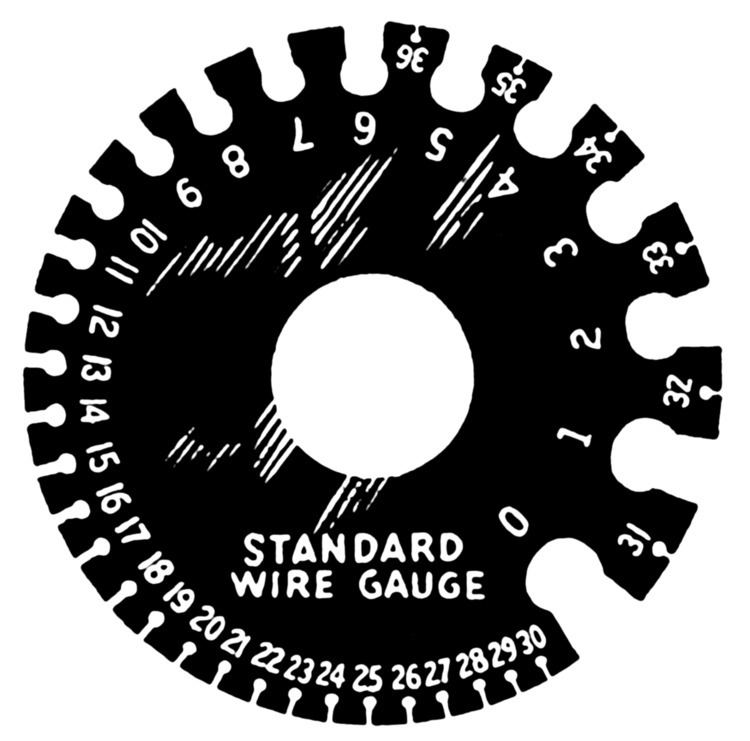 | ||
British Standard Wire Gauge is a set of wire sizes given by BS 3737:1964 (now withdrawn), and is generally abbreviated to SWG. It is also known as: Imperial Wire Gauge or British Standard Gauge. Use of SWG sizes has fallen greatly in popularity, but is still used as a measure of thickness in guitar strings and some electrical wire. Cross sectional area in square millimetres is now a more popular size measurement. The current British Standard for metallic materials such as wire and sheet is BS 6722:1986, which is a solely metric standard.
SWG was fixed by Order of Council August 23, 1883. It was constructed by improving the Birmingham Wire Gauge. It was made a legal standard on March 1, 1884 by the British Board of Trade. SWG is not to be confused with American Wire Gauge which has a similar but not quite interchangeable numbering scheme.
The basis of the system is the thou (or mil in US English), or 0.001 in. No. 7/0, the largest size, is 0.50 in. (500 thou or 12.7 mm) in diameter, and the smallest, No. 50, is 0.001 in. (1 thou or about 25 µm) in diameter. The wire diameter diminishes with increasing gauge size. Between each gauge, the weight per unit length diminishes by approximately 20%. Because the weight per unit length is related to the area, and therefore the square of the diameter, the diameter diminishes by approximately 10.6%:
A table of wire gauges and diameters is shown below. The relationship of diameter to gauge is piecewise linear, only approximating a (constant-ratio) exponential curve.
